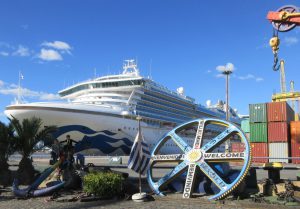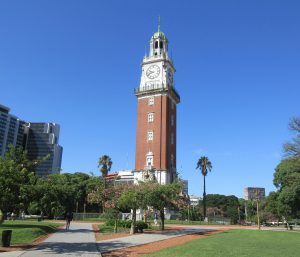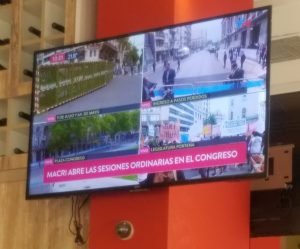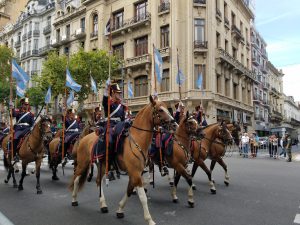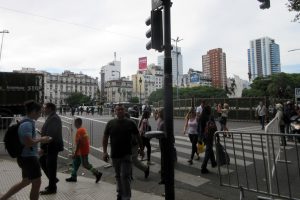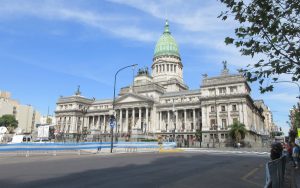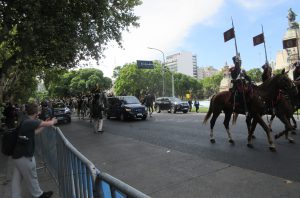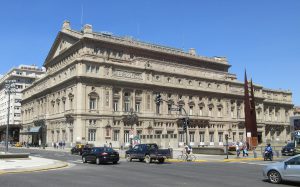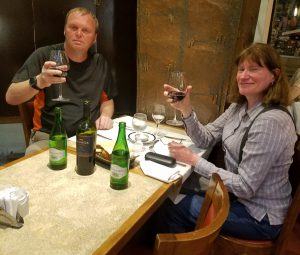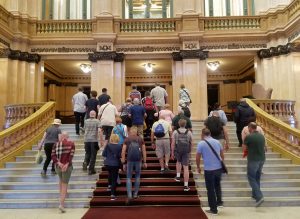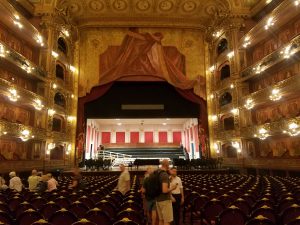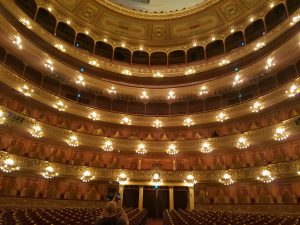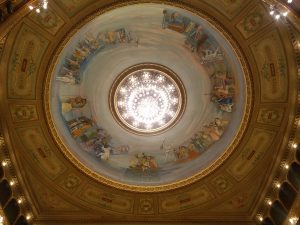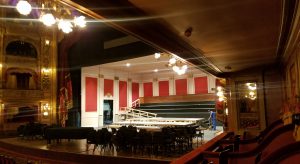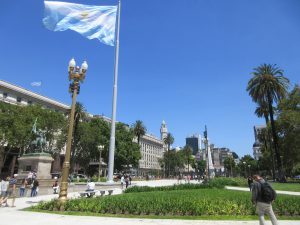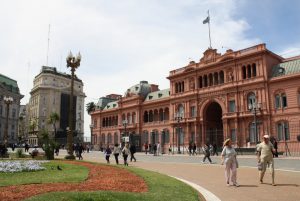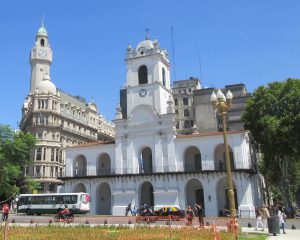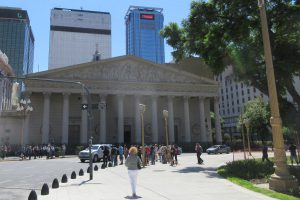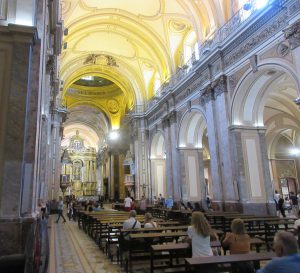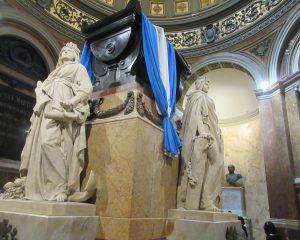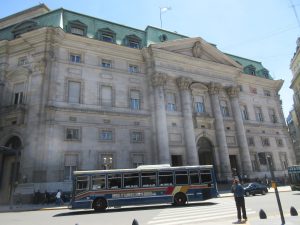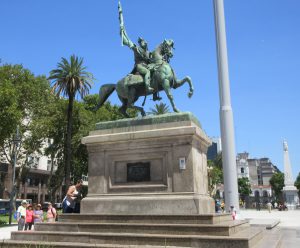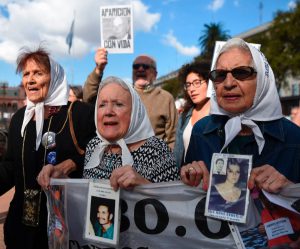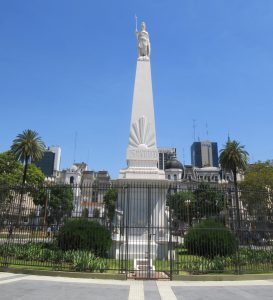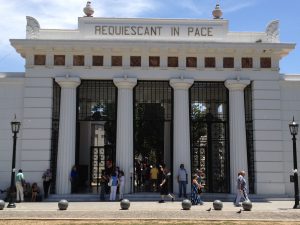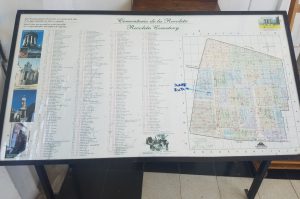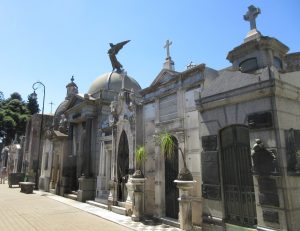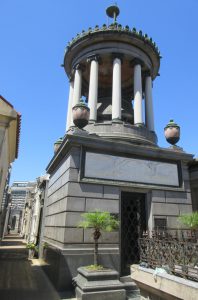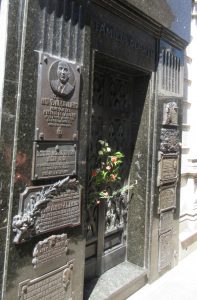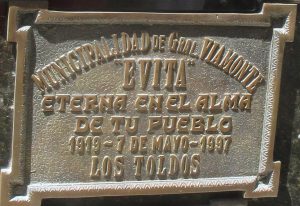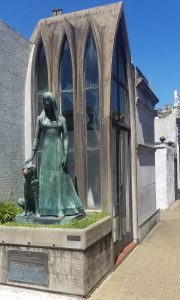Our cruise comes to an end in Buenos Aires, Argentina.
When I was 13, the UK was at war with Argentina over the Falkland Islands.
In the community I grew up in, “Argentina” was mostly footballers with std’s and everyone else was looked a villain from a cowboy film.
30 years later, my common sense told me this couldn’t all be true, so I was quite excited to arrive to see what the place was really like.
After a well organised disembarkation from our boat at 7am and were wheeling our bags from the port towards our hotel.
On the way we see the Torre Monumental clock. Originally named the Tower of the English, it was a gift from the British Government using imported British “Red” brick.
After the 1982 war, the name Tower of the English was changed and everyone refers to it as the Torre.
Arriving at our hotel, our hosts are friendly and helpful and we’re shown to our room.
We’d left the boat quite early, so decided to dump our bags and head out for some breakfast.
We find somewhere for breakfast and tuck in.
But what’s this on the tv ? There seemed to be some sort of March with horses going on somewhere.
We realised to our surprise that at that moment, the horses, security and all the regalia were passing the cafe outside where we were sitting !
We carried on exploring and could see a number of protests taking place. Something was happening and this part of the city was being locked down.
Various road and streets were closed by the police and security services with barriers being erected. People with riot shields started appearing!.
I won’t lie I was a bit nervous, and we briefly considered going back to our hotel.
But if we headed in the other direction, I reasoned we could carry on exploring and keep out of trouble.
We had planned to join a free walking tour that started at The National Congress Building.
We worked our way around various closed road and eventually to our destination.
Only to realise, that the horses etc, were all converging on the Congress Building (it was the final destination of their Parade, we found later that the President was addressing the occupants of the building in some sort of capacity).
With our tour cancelled, time for plan B. My guidebook to Buenos Aires listed 10 must see sights. Theatre Colon was one of them so off we went.
Constructed 1908 it symbolises the Golden era or Buenos Aires.
A time when “wealthy as an Argentine” was a phrase often used in Paris and New York.
Tours have to be booked well in advance normally, but we were lucky and booked onto one starting an hour later.
It was quite expensive, but they had a nice wine bar in the waiting area, so we tried some Argentine Merlot.
The tour begins, and we head upstairs for our 90-minute tour.
Nothing short of Palatial (as you’d expect, it ranks among the worlds top 10 opera houses).
Italian marble, French stained glass, Venetian mosaics.
Inside the main auditorium.
Performances are pre-booked months into the future. It fills up every night, as it has done for over 100 years.
The view with the stage behind me.
I was struck by the lighting and how atmospheric it was.
In the ceiling, what looks like a light actually contains a powerful speaker.
This contributes to its world renowned, near perfect acoustics.
I got to hear them first hand, as some joiners were preparing the stage and the sound of hammering and sawing reverberated throughout the arena.
We wander towards Plaza de Mayo, the Political, spiritual and cultural centre of Buenos Aires.
It’s here that the people danced after World Cup victory in 1986.
Casa Rosada – The Pink house, the President’s official offices (unlike the White House, the President doesn’t actually live here.
Eva Peron addressed the people from its Balcony’s.
The Cabilda, in its classic colonial style.
Once used as a local town hall, but today used as a museum of the May revolution.
La Catedral Metropolitana, the main Catholic church in Buenos Aires.
There were queues for everything, but we were able to get inside the Cathedral and that choice was rewarded.
Further inside, the Mausoleum of General San Martin.
Guarded by statues representing Argentina, Peru and Chile.
Banco. Well, it’s a big bank.
More seriously, its associated with the economic riots in 2001 which were part of the “Argentine great depression from 1998 – 2002.
Corral policies were instituted which stopped people withdrawing cash from banks and pensions were not paid.
Rioting and protests started almost immediately, President Fernando de la Rua resigned, replaced by President Adolfo Rodriguez Saa who resigned less than 12 days later.
In total it cost 39 civilian lives, 9 of which were minors.
Monument to General Belgrano.
It’s a name that’s well known in the UK as the Argentine flagship, sunk in the Falklands War (controversially at the time, but Prime Minister Thatcher has since been vindicated by a book written by it’s Captain Hector Bonzo).
But actually was General Belgrano. Described as an economist, politician and military leader, he was involved in the independence of Argentina.
Les Madres – The mothers. I borrowed this image from a Guardian article.
Between 1976 and 1982 many people were “disappeared” by the Military Junta.
Their mothers and other relatives protest peacefully in the square, seeking information about their loved ones.
Piramide de Mayo – constructed in 1811, it’s the oldest monument in Buenos Aires.
We leave Plaza de Mayo and head for another of the top 10 tights.
Cementerio de la recoleta.
Nicknamed city of the dead, it houses mausoleums and graves of generals, presidents, celebrity and Eva Peron.
It’s so large and elaborate that there’s even a map to find your way around.
You can see why it’s called the city of the dead. Everything is in rows side by side in streets and avenues.
One of the more elaborate mausoleums, but it has to be said, there are hundreds just like it.
The thing that most people come to see – the family mausoleum of Eva Duarte de Peron.
She died of Cervical cancer in 1952. Even in death she was a threat to some people. Her body disappeared for 3 years, afterwards she spent time buried under a false name in Milan.
She was finally returned to Argentina and interned in her family mausoleum in 1976 , but not with her believed husband Juan Peron.
She was (and still is) revered by the working class people of Argentina, who she called the Descamisados – The Shirtless ones.
I remember some of the people visiting were playing Evita on their phones. Up to the individual how they deal with grief, but I found it intrusive.
The inscription translates to: Eternal in the soul of your fire.
